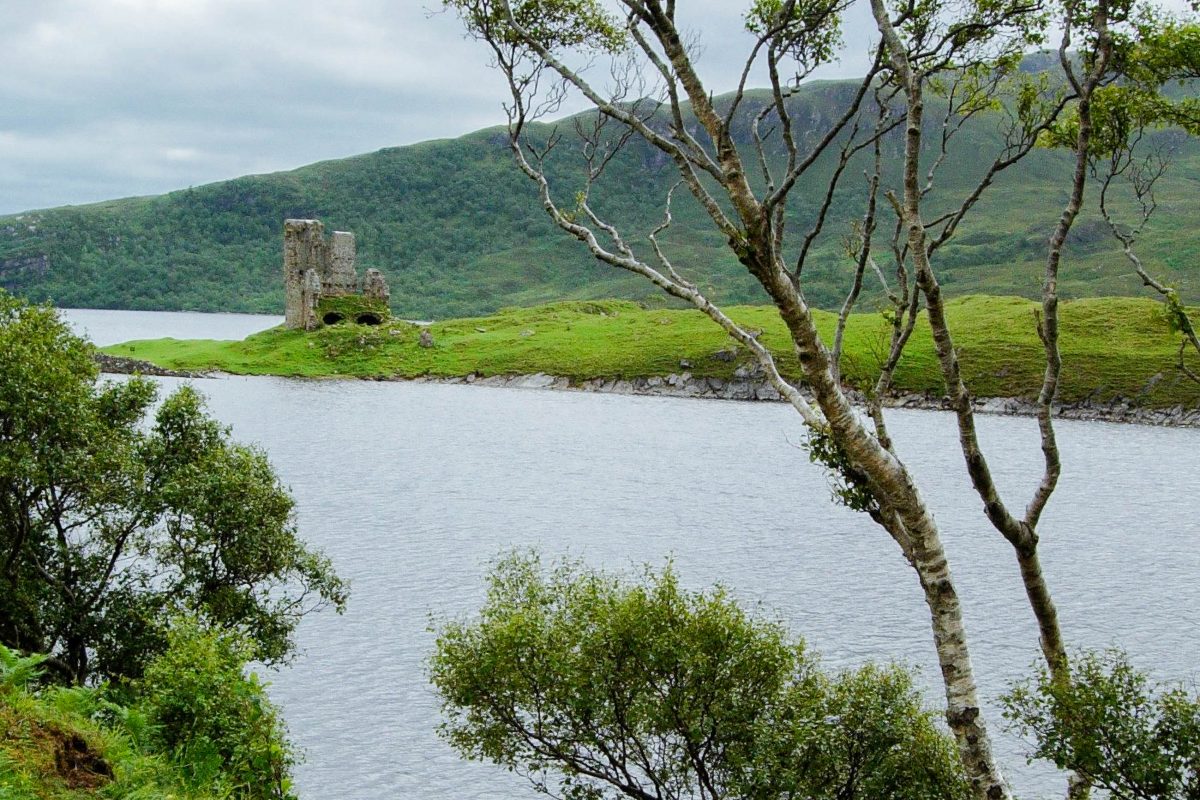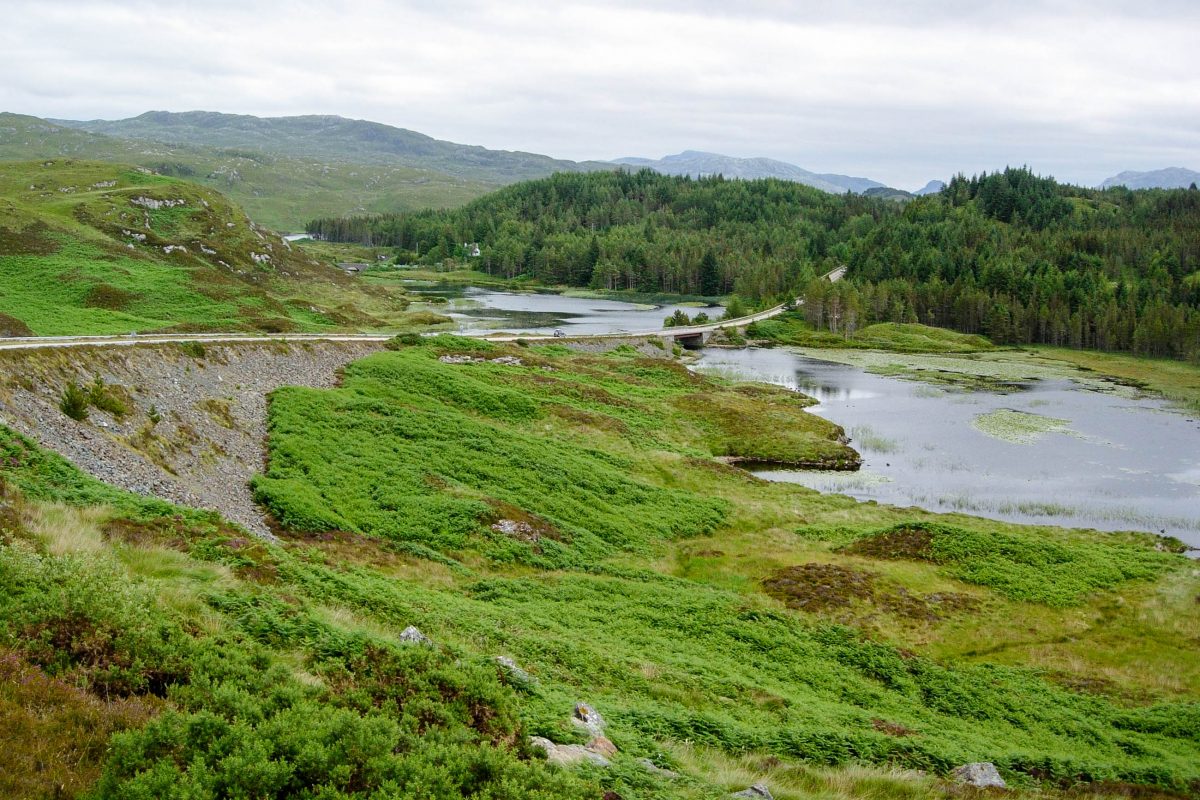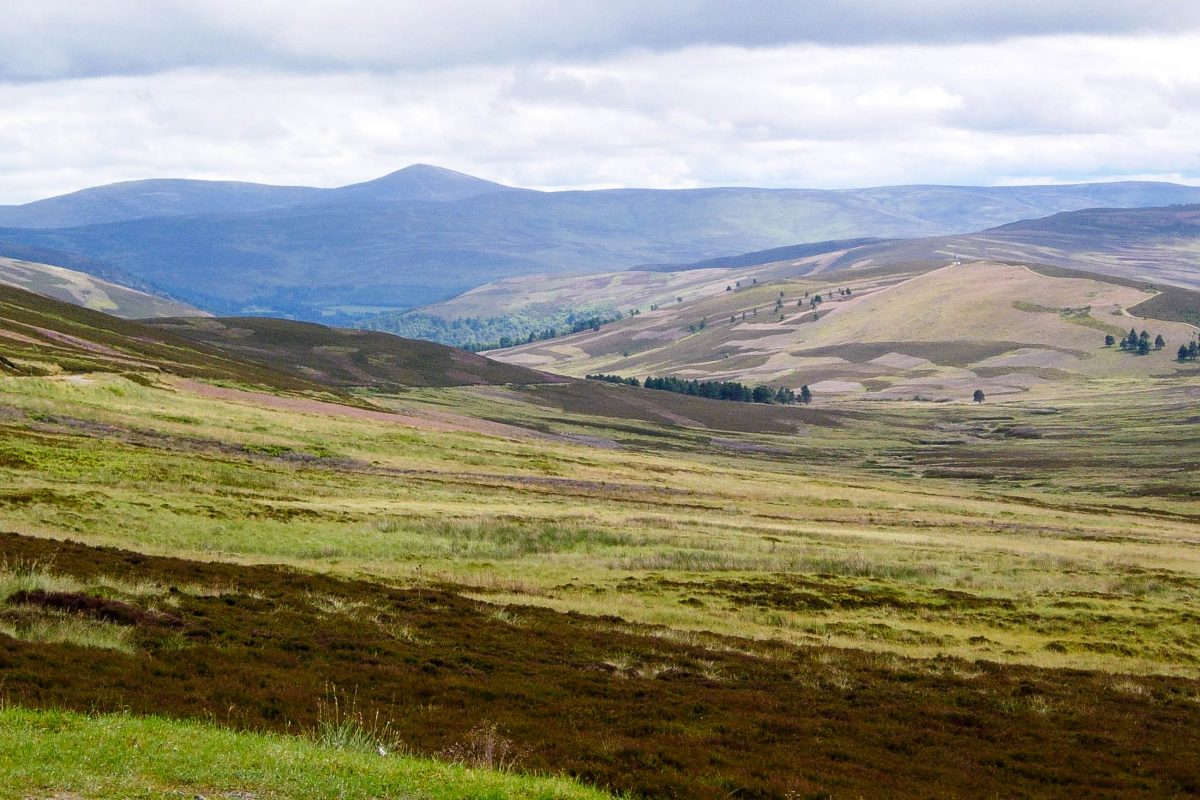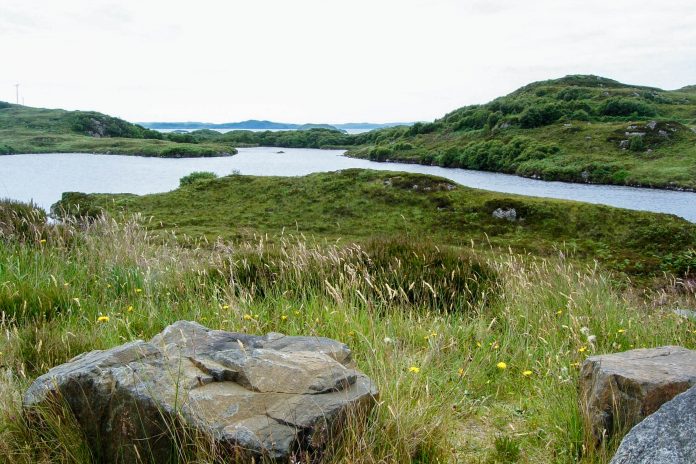Die Highlands im Norden Schottlands zählen zu den am dünnsten besiedelten Gebieten Europas – ein El Dorado für Outdoor-Aktivisten aller Art, die unberührte Natur und die Ruhe der Einsamkeit suchen.
Die Highlands im Norden von Schottland sind aufgrund ihrer einsamen Grasebene, stillen Lochs, melancholischen Buchten und verschlafenen Städtchen weltberühmt – dazu hat wohl auch der bekannte Hollywood-Film „Highlander“ beigetragen, der in epischer Manier von den Kämpfen zwischen Schotten und den Soldaten der britischen Krone erzählt. Die wildromantische Landschaft zählt zu unseren Top 10 Sehenswürdigkeiten von Großbritannien.
Inhaltsverzeichnis
BILDER: Schottisches Hochland
Fotogalerie: Schottisches Hochland
Der gewaltige Graben „Great Glen“, der aus der Luft als schnurgerade Linie erscheint, trennt das schottische Hochland von den südlich gelegenen Grampian Mountains. Entlang dieses Grabens liegt neben mehreren anderen Seen auch das berühmte Loch Ness.
Als Highlands wird eigentlich nur ein Verwaltungsbezirk im nördlichen Großbritannien bezeichnet. Oft wird der Begriff jedoch weiter gefasst und als Gegensatz zu den Lowlands verwendet. Damit wären auch die Grampian Mountains Teil der Highlands.
Sehenswürdigkeiten in den Highlands
Im Gegensatz zu Schottlands südlichen Lowlands wurden die Highlands in den letzten Jahrhunderten von den Engländern nicht so stark beeinflusst und konnten ihre ursprüngliche Kultur bewahren. So leben bis heute noch einige wenige der typischen schottischen Clans in den Highlands, die gemeinsam mit dem exzellenten Whiskey das schottische Hochland auf der ganzen Welt bekannt machten.
Wandern und Bergsteigen

Die Landschaft der Highlands ist durch endlose, grasbewachsene Flächen ohne Baumbestand und scheinbar fernab jeglicher Zivilisation geprägt. Hie und da wächst eine alte steinerne Ruine aus den weiten Ebenen oder glitzert ein See oder Flusslauf im seltenen Sonnenschein.
In der menschenleeren Einsamkeit fühlen sich Otter, Wildkatze, Schneehuhn, Auerhahn und Fischadler wohl, zu deren Schutz übrigens zu manchen Zeiten die befestigten Wege nicht verlassen werden dürfen.
Von kurzen Spaziergängen bis zu anspruchsvollen Berg-Abenteuern ist in den Highlands alles möglich. Vor allem das Besteigen und „Sammeln“ der so genannten „Munros“, jener Berge im schottischen Hochland, die höher als 914 Meter (3.000 Fuß) sind, wurde in Schottland zu einer eigenen Bergsport-Disziplin. Wander- und Bergkarten sind in allen Touristeninformationen und manchmal auch in Supermärkten oder an Tankstellen erhältlich.
Tipp: Von Übernachtungen unter freiem Himmel ist in den Highlands eher abzuraten. Vor allem bei hoher Luftfeuchtigkeit tauchen am Abend tausende kleine schwarze Mücken wie aus dem Nichts auf, die sich zu einer echten Plage entwickeln.
Achtung: Die Highlands sind keine Alpen!

Auch wenn die Highlands nicht hoch erscheinen, aufgrund der nördlichen Lage kann man sie nicht mit Verhältnissen in den Alpen vergleichen. Um Temperatur und Höhenluft abschätzen zu können, sollte man ungefähr 1.200 Meter zur „alpinen Höhe“ hinzufügen. Zum Vergleich: Die Baumgrenze der Highlands liegt auf 500 Metern. Das Wetter in den Highlands kann schnell umschlagen, ohne Kompass findet man dann kaum mehr aus dem Nebel heraus.
Inverness
Administratives und touristisches Zentrum der Highlands ist Inverness, die größte Stadt des schottischen Hochlands direkt am Great Glen. Hier betreiben viele Shopping-Tempel ihre nördlichste Filiale in Großbritannien und von Inverness aus starten auch zahlreiche Touren in das Umland.
Fort William
Fort William ist keine Befestigungsanlage, sondern der Hauptort am südlichen Ende des Great Glen. Der Atlantik beschert der Natur um Fort William ein mildes Klima und lässt üppige Märchenwälder mit Unmengen an Moosen und Farnen gedeihen. Die Bahnlinie von Fort William zum Fährhafen Mallaig zählt zu den schönsten Reisestrecken der Welt. Für Mountainbike-Touren, Wanderungen, Reitausflüge und Trekking, unter anderem zum Ben Nevis, dem höchsten Berg Schottlands, stellt Fort William den idealen Ausgangspunkt dar.
Weitere beliebte Touristendestinationen in den Highlands sind die beiden Küstenorte Ullapool und Thurso, da hier die Fähren zu den äußeren Hebriden bzw. den Orkney Islands ablegen.

Ben Nevis
Der Ben Nevis ist mit 1.343 Meter der höchste Berg Schottlands. Er liegt in den Grampian Mountains, die je nach Definition oft noch zu den Highlands gezählt werden, in der Nähe von Fort William und kann über einen beschwerlichen 8km langen Wanderweg bestiegen werden.
Auf der 3 bis 4 Stunden dauernden Wanderung sollte genug zu essen und trinken mitgenommen werden, denn Verpflegung gibt es keine. Auch warme Kleidung ist unbedingt notwendig! Vom Gipfel des Ben Nevis fällt der Blick weit über die Hügel der Highlands. In den Sommermonaten muss man sich allerdings auf einen Massenansturm gefasst machen.
Glencoe
Das schroffe Tal Glencoe zählt zu den bekanntesten Sehenswürdigkeiten der Highlands. Nur ein Dorf, Glencoe, befindet sich dort, direkt am Talausgang. Die saftig grünen Hügel stellen die ideale Kulisse für Wanderungen und Skipisten dar, die auch schon für mehrere bekannten Filme verwendet wurde, unter anderem Highlander, Braveheart, James Bond – Skyfall und Harry Potter und der Gefangene von Askaban.
Cairngorm Mountains

3.800 Quadratkilometer der sattgrünen Täler und schroffen Gipfel der Cairngorm Mountains sind seit 2003 als Großbritanniens größter Nationalpark geschützt. Die spektakuläre Kulisse der Cairngorm Mountains zeigt sich je nach Tageszeit in faszinierenden Licht- und Schattenspielen und ist geprägt von uralten Kiefernwäldern, Felslandschaften, Mooren, Marschen und Lochs. Über das üppige Grün des Cairngorm Nationalparks sind zauberhafte Ortschaften verstreut, die Übernachtungsmöglichkeiten für Golfer, Wanderer und Skifahrer bieten.
Loch Ness

Das berühmte Loch Ness 10km südwestlich von Inverness ist nicht nur aufgrund seines angeblichen Monsters, sondern auch wegen seiner atemberaubenden landschaftlichen Schönheit eine Reise wert. Der zweitgrößte See Schottlands ist eines der fischreichsten Gewässer von ganz Großbritannien und hält an seinem Ufer die Ruine des einst imposanten Urquhart Castle bereit.
Isle of Skye
Die Isle of Skye hat wohl das spektakulärste Bergpanorama der gesamten Highlands zu bieten. Zwei Fährverbindungen von Mallaig und Glenelg und die berühmte Skye-Bridge führen vom Festland in die atemberaubende Landschaft der zerklüfteten Insel. Vor allem die Cuillins of Skye, deren zerklüftete, bis zu knapp 1.000m hohe Gipfel allerdings erfahrenen Bergsteigern vorbehalten sind, bieten zahlreiche fantastische Wanderungen und Aussichtspunkte. Wer es lieber sanft hügelig und grün-bewaldet hat, sollte sich eher in den Süden von Skye begeben.
Moray

Die prachtvolle Natur in Moray im Nordosten von Schottland ist ein Paradies für verschiedenste Outdoor-Aktivitäten. Neben atemberaubenden Stränden wie Burghead, Hopeman oder Losiemouth und Küstenabschnitten wie Spey Bay oder Culbin Sands, die über und über mit Seevögel bevölkert sind, lockt auch der regionale Whiskey Touristen nach Moray, dessen Geschichte und Geschmack am Malt Whiskey Trail entdeckt werden kann.
Die steilen Klippen des Moray Firth, des größten Meeresarms in Schottland, werden neben Unmengen an Vögeln sogar von Walen und Delfinen heimgesucht und bieten ideale Bedingungen für Lachs- und Forellenfischer.
Geschichte der Highlands
Die „Ureinwohner“ des schottischen Hochlandes waren Kelten und Skandinavier, die sich in so genannten „Clans“ organisierten. Der Clan-Führer herrschte über seinen Clan und das ihm angestammte Gebiet, Kämpfe zwischen den Clans waren keine Seltenheit, auch mit dem Hause Stuart, das über die Lowlands herrschte, kam es immer wieder zu kriegerischen Auseinandersetzungen. Ende des 16. Jahrhunderts war dies jedoch vorbei und die meisten Clan-Führer nach politischem und militärischem Einsatz dem Hause Stuart treu ergeben.
Jene aufständischen Clans, die mit dem Zusammenschloss von England und Schottland unter englischer Führung nicht einverstanden waren, konnten, teils mit der Hilfe der loyalen Clans, niedergeschlagen werden. Im späten 18. und 19. Jahrhundert war es nach der berüchtigten Highland Clearance („Säuberung“), mit den Clans endgültig vorbei. Für die Schafzucht wurden sie von ihrem Land vertrieben und wanderten zum Großteil nach Nordamerika und Australien aus.
Heute sind die Highlands nahezu unbesiedelt. Die Gälische Sprache der Highlands ist so gut wie ausgestorben, lediglich einige Menschen im äußersten Norden und Westen verwenden sie noch und einige Ortsnamen gehen auf das Gälische zurück. Und so zählen die Highlands noch heute zu den am dünnsten besiedelten Gebieten der Welt.
Weiterführende Links:





